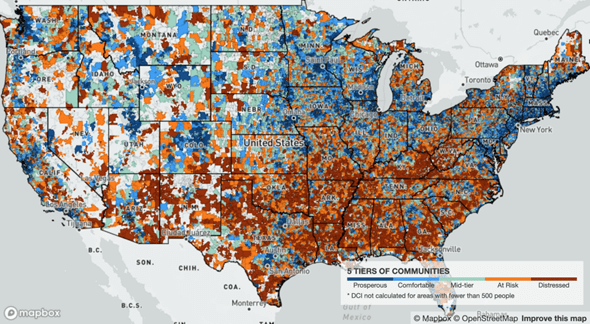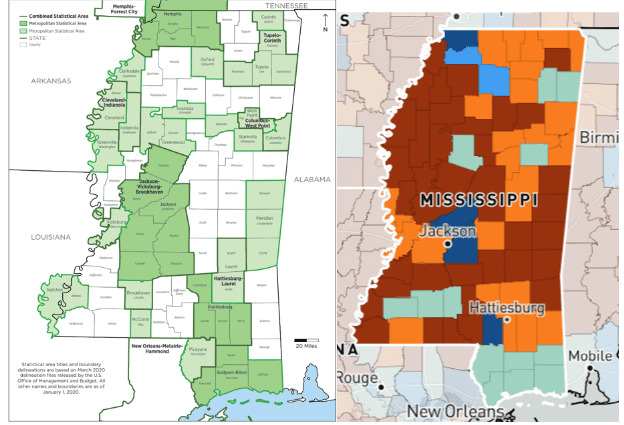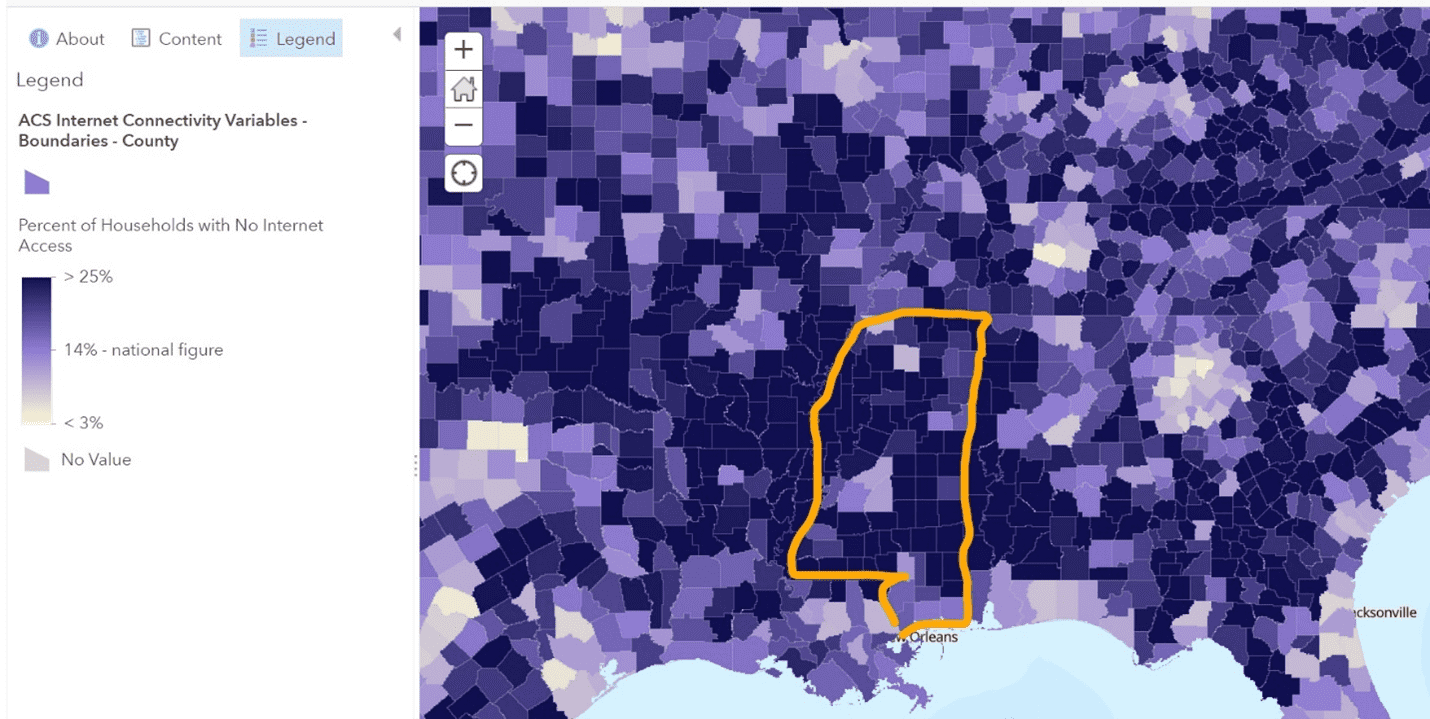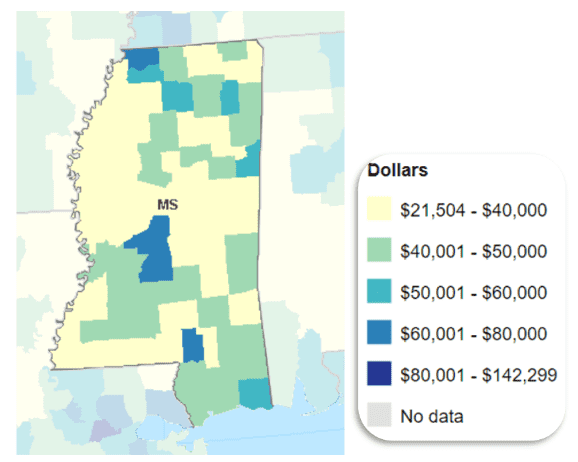Healing Healthcare in Distressed Areas of the Country
Causeway Solutions
Healthcare, Distressed Areas, Community Analysis
April 29, 2022
Healing Healthcare in Distressed Areas of the Country
The world of medicine is constantly advancing. From the gene therapy in Oxford that is halting the development of blindness to repairing the human liver with lab-grown cells, we have more access to medical miracles than ever before. However, access to medical advancement is not easy to find everywhere in the country, with certain areas having more barriers than others. How are these areas defined, what are the barriers, and what are the potential solutions moving forward? Read on as Causeway Solutions Analyst Abby Jovanovic takes us into her analysis of healthcare in distressed areas.
A Closer Look
What are distressed areas? According to the Delta Regional Authority, to be deemed distressed, counties or parishes must have an unemployment rate of one percent higher than the national average for the most recent 2-year period and have a per capita income of 80% or less of the national per capita income. While these two points are the official criteria, other factors like education, housing vacancy, poverty rate, and internet access also correlate with distressed areas. In the U.S., approximately 16% of the population lives in a distressed community (broken down in the map below), while 26% live in prosperous communities.

For this analysis, we looked into the Gulf South state of Mississippi.

Mississippi has more distressed communities than most of the other areas of the U.S., with 45.4% living in a distressed area and only 5.9% living in a prosperous one. Specific regional views show the breakdown of metropolitan and micropolitan areas compared to the other areas.

Although many metropolitan areas correlate with prosperous areas, this connection does not seem to be the end-all-be-all for distinguishing which areas are distressed. A closer association comes from measuring internet connectivity, as seen below. Areas whose internet access is closer to the national average are more prosperous, while areas with a higher percentage of households without internet access are more distressed.

Median household income profiles show that the more rural the location, the lower the income and the less likely they are to have internet access.

Health Disparities
How do these findings impact residents? Access to healthcare is important to everyone as it can assist in disease prevention, illness detection, overall health statuses, and sustaining the quality of life in the area. Healthcare Access is defined as "necessary and appropriate healthcare services available and obtainable in a timely manner," but it runs into significant barriers in rural areas. Because of this situation, "people who live in rural areas of the U.S., such as many parts of Mississippi, are more likely than urban residents to die prematurely from the five leading causes of death: heart disease, cancer, unintentional injury, chronic lower respiratory disease, and stroke," according to the CDC.
The barriers to good healthcare can be seen in the maps and include everything from the ability to pay for services like insurance to access to services such as the internet, transportation, and availability of nearby specialists. In addition, many residents cannot take personal time off from work, have poor health literacy, or lack trust in the healthcare system to deliver quality services. To ensure better healthcare access, solutions are needed for both access to services and confidence in care.
Potential Solutions
Addressing transportation issues is one of the major ways to address the health access disparities. The Rural Health Information Hub states, "Rural residents rely on personally owned, single driver automobiles for transportation than their urban counterparts. However, many rural residents cannot rely on this mode of transportation. Personal vehicles can be expensive to purchase and maintain, and some residents may not have drivers' licenses. Additionally, rural residents who have physical or mobility limitations may not be able to drive." To mitigate transportation problems, effort must be put into public transportation systems and education on the transportation options available. By assisting rural residents in need of non-emergency care, especially the elderly and those with disabilities, healthcare providers can improve the utilization of their services and decrease the need for emergency treatments needed in the future.
The emergence of telehealth is another solution to healthcare disparities. Telehealth has grown in adoption, and by increasing its utilization, it could be vital to addressing access and transportation issues. According to our previous healthcare survey, 67% of respondents reportedly tried telehealth and would use it again, while 17% who have not tried it would still consider it. While many people would still want to physically visit a doctor's office or hospital for primary, urgent, or specialty care, many are open to telehealth for other services. With the cost-effectiveness and savings allowing for extended specialist access, telemedicine can increase patient engagement and treatment quality along with increasing the overall confidence in the healthcare system for rural residents. In addition, the ability to access telehealth might give communities more reason to look at investing in internet access in these areas.
Conclusion
Healthcare access is a significant issue for distressed areas of the country. This analysis shows that lower incomes and limited internet access are two important barriers to healthcare access rather than the metropolitan versus rural divide. Addressing healthcare access in the distressed rural areas specifically, solutions such as transportation access, information, and increased telehealth usage can potentially help. By addressing the healthcare access issues, the country can help increase the overall quality of life and help to improve these areas in the future.
But who are the people who live in the area specifically? How should messengers target them, and what message do they send? Causeway Solutions can help break down those answers with you. And check back for our latest polling data on healthcare, including telehealth, in our May 2022 newsletter!
To learn more, visit Causeway Solutions to get started!